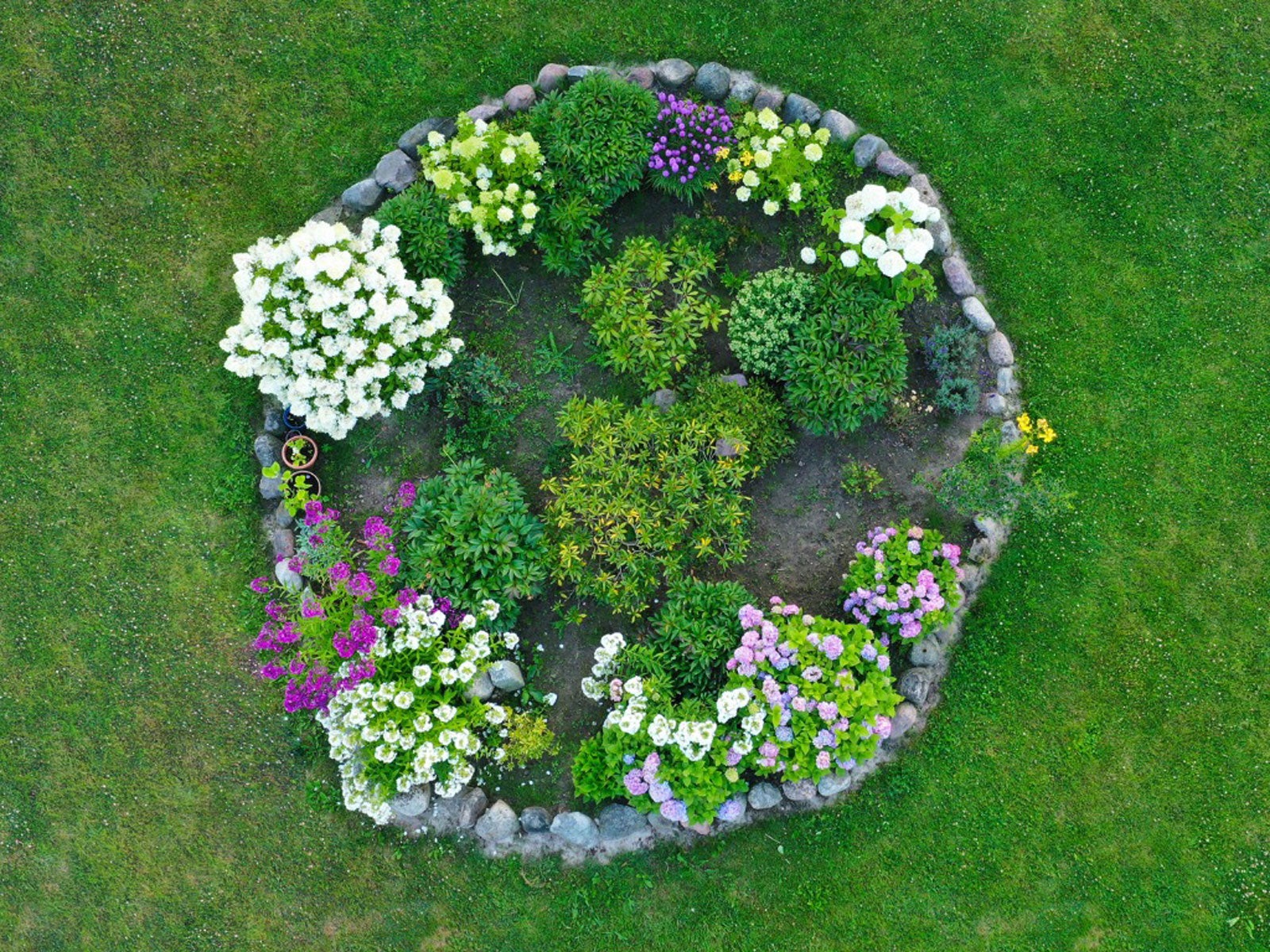Flower Bed Circle Design: How To Grow Flowers In A Circle


Flower beds tend to be roughly rectangular or maybe a little curvy and kidney bean-shaped, but what about a circle? Any shape goes, really, but a circular flower bed can be a fun way to do something different or to create a distinctive focal point in your garden.
Why a Round Flower Bed?
We tend to create flower beds in obvious spaces, around a tree, up against the house, or in a space between walkways. We tuck them away into these spaces where they serve as beautiful backdrops for garden structures or grassy lawns.
What if you want to make a flower bed the focus of your garden, though? Or do you have a big open space you want to fill? A circle-shaped flower bed is the perfect solution. You can put one literally anywhere and it will become a striking focal point. There is something about flowers in a circle that is just pleasing to the eye.
Designing a Circular Flower Bed
A flower bed circle design can be trickier than you realize. Most other types of beds have some kind of backdrop such as a wall, fence, walkway, tree, or simply the edge of your garden. A round flower bed stands alone and that means it requires special design considerations.
Start with a plan for where you’ll construct the bed and the size. Place a wooden stake in the center of the chosen location. Tie a string to the stake and use it to mark out a perfect circle. With an easy-to-move stake and a long piece of string, you can play around with size and location until you get it right.
With your circle marked out, you can remove any grass or weeds and then turn and prepare the soil. Now it’s ready for planting but create a plan first. Here are some ideas:
- Create a border of some type. An edge around the circle will help define it, but you can use just about anything including traditional garden edging, stones, bricks, a low hedge, or low clustered flowers to create a border.
- Choose a centerpiece for the circle. An existing tree is a great center for a flower bed but isn’t necessary. There should be something, though, to anchor the circle like a shrub, a taller flower type, or a plant with interesting foliage.
- Design a pattern. Don’t simply put in flowers at random. A circle calls for more order. Try designs like concentric rings of different flower types or wedges, like a pie. Repetition works well.
- Select varied plants that grow well together. All the plant types should require the same soil, water, and light conditions to make maintenance in the bed easier. However, you also need variety to avoid simply having a solid circle. Choose different heights and colors and include plants with interesting foliage to complement flowers.
Gardening tips, videos, info and more delivered right to your inbox!
Sign up for the Gardening Know How newsletter today and receive a free copy of our e-book "How to Grow Delicious Tomatoes".

Mary Ellen Ellis has been gardening for over 20 years. With degrees in Chemistry and Biology, Mary Ellen's specialties are flowers, native plants, and herbs.